Why we struggle under pressure, as taught by the crash of Flight 1420
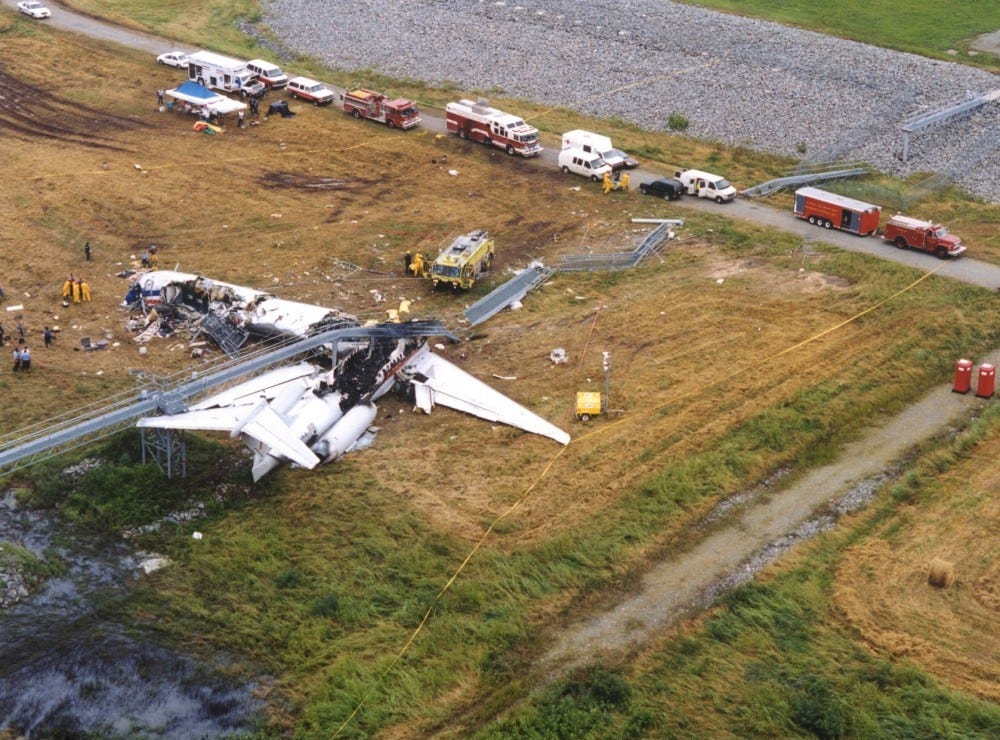
Analogous Insights is long form content that makes you smarter and more self aware using aviation as its catalyst. This article will take about 9 minutes to read so please grab an iPad or laptop, a coffee and a comfy chair. This article is based on the facts from the accident report and is free from opinion or finger-pointing.
—
If we can master our mind under pressure, then we can leverage a key part of the human condition that works against so many others.
The pressure to get somewhere, do something, act a certain way, or to perform can cloud judgement in ways that materially affects the outcome. It’s been an area of opportunity for this monkey brain of ours for millennia. In these situations the brain becomes focused on an outcome, a checkmark, or a reaction and moves away from diligence, process and objectivity.
In these situations decades of experience and training can vanish into thin air as if they had never occurred at all. The “must get it done” region of the brain takes over. We start to overlook details, take chances we wouldn’t normally take, or say stuff that isn’t us. We are consumed with just getting it done.
In the world of aviation, this is understandably a primary threat to the safety profile of the industry. Recognizing that arrival times are a central deliverable for pilots, the risk for “get-there-itis” as it is called in the industry is high.
Get-there-itis: The determination of a pilot to reach a destination even when conditions for flying are very dangerous. In technical terms, a form of plan continuation bias.
- Wikitionary
Unfortunately on June 1, 1999, the passengers and crew onboard American Airlines Flight 1420 faced the painful reality of a likely case of get-there-itis, one that sadly cost 11 of them their lives.
While attempting to land at the Little Rock Airport in their MD-80, the aircraft lost control and ran off the runway and into an ILS localizer antenna. A post-accident fire ensued.
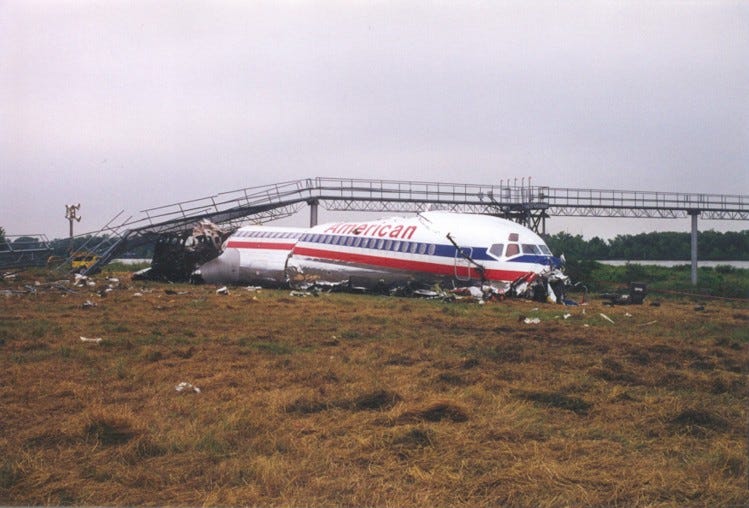
The pilots on this flight, very well esteemed with over ten thousand hours of experience were aptly prepared and trained. But back in 1999 the industry still did not fully understand the threat of get-there-itis and the pilots in this case and many others faced undue and misunderstood pressure to meet arrival times.
The accident report was clear that the pilots on flight 1420 took undue risks, the results of fatigue and pressure. These risks included attempting to land in a thunderstorm, pushing the aircraft outside of its approved performance envelope, and rushing key checklists in preparation for landing, including fatefully forgetting to arm the spoilers (more on that later).
“The flight crew’s degraded performance was inconsistent with the level of
performance that would have been expected from both pilots.”- Accident report
In the end, we all can learn from this - to recognize the signs of get-there-itis across a range of situations in life and to change the course that we are on.
THE BRIEFING
Flight 1420 was the final leg for both pilots after a full day of flying. The pilots had flown two prior legs ending in Dallas. This short haul flight between Dallas and Little Rock was sequenced strategically in the day to avoid maxing out the pilot’s hours of service limits.
At the time pilots were allowed a maximum of 14 hours of duty time within a 24 hour period. Considering their full day, they were quickly pushing up against this limit as the departure time for Flight 1420 approached. They had to be airborne by 11:16pm or the flight was likely cancelled, which neither the pilots wanted (they are paid based on flight time), nor the airline and passengers for obvious reasons.
⚠️ Get-there-itis hint: you are running up against an imminent and close-in deadline
As the clock ticked past 10pm the pilots were under the gun to get the flight off the ground, and were able to achieve a “down to the wire” takeoff at 10:41pm. But they had to hustle to their destination.
This time pressure was known on the flight deck. The first officer commented shortly after take off to the captain, “got your Nikes on?.” They had to boot it, but shortly into the flight new reasons would arise that furthered the pressure to get the job done quickly.
⚠️ Get-there-itis hint: the feeling of being rushed becomes tangible
Enroute to Little Rock the pilots were contacted by dispatch who informed them of inclement weather at their destination airport and encouraged them to “expedite” their flight otherwise they might need to divert from their destination.
When the pilots checked their on-board weather radar they saw a massive thunder and lightening storm approaching their destination airport. Given that thunderstorms are fast moving systems and the fact that they were still a ways away from Little Rock, it made sense to continue but remain cautious.
But this storm would soon turn into more than they expected.

ℹ️ Aircraft cannot fly into thunderstorms, they can only fly above them but even that is discouraged without a meaningful margin of safety. Thunderstorms have tremendous vertical air currents - known as updrafts and downdrafts - that can literally tear apart airliners mid-air resulting in a catastrophic structural failure and the certain death of everyone onboard.
Concerningly the storm had continued to move in a track over the airport that placed the aircraft directly in the path of it. Given the proximity of the storm to the airport, there were new related problems to deal with: wind. Air masses around thunderstorms can be volatile which results in high and variable winds.
As flight 1420 approached Little Rock Airport, ATC reported to the pilots that winds on the airfield were 28 knots, gusting 44 knots (81 km/h) and came from such a direction that produced a crosswind factor of 28 knots. The pilots could not agree if this was above their airline-imposed maximum crosswind limit, however in actuality, with the runway being wet, it was well over the limit of 20 knots.
⚠️ Get-there-itis hint: you start to misremember training and long-held memory items, including company policy
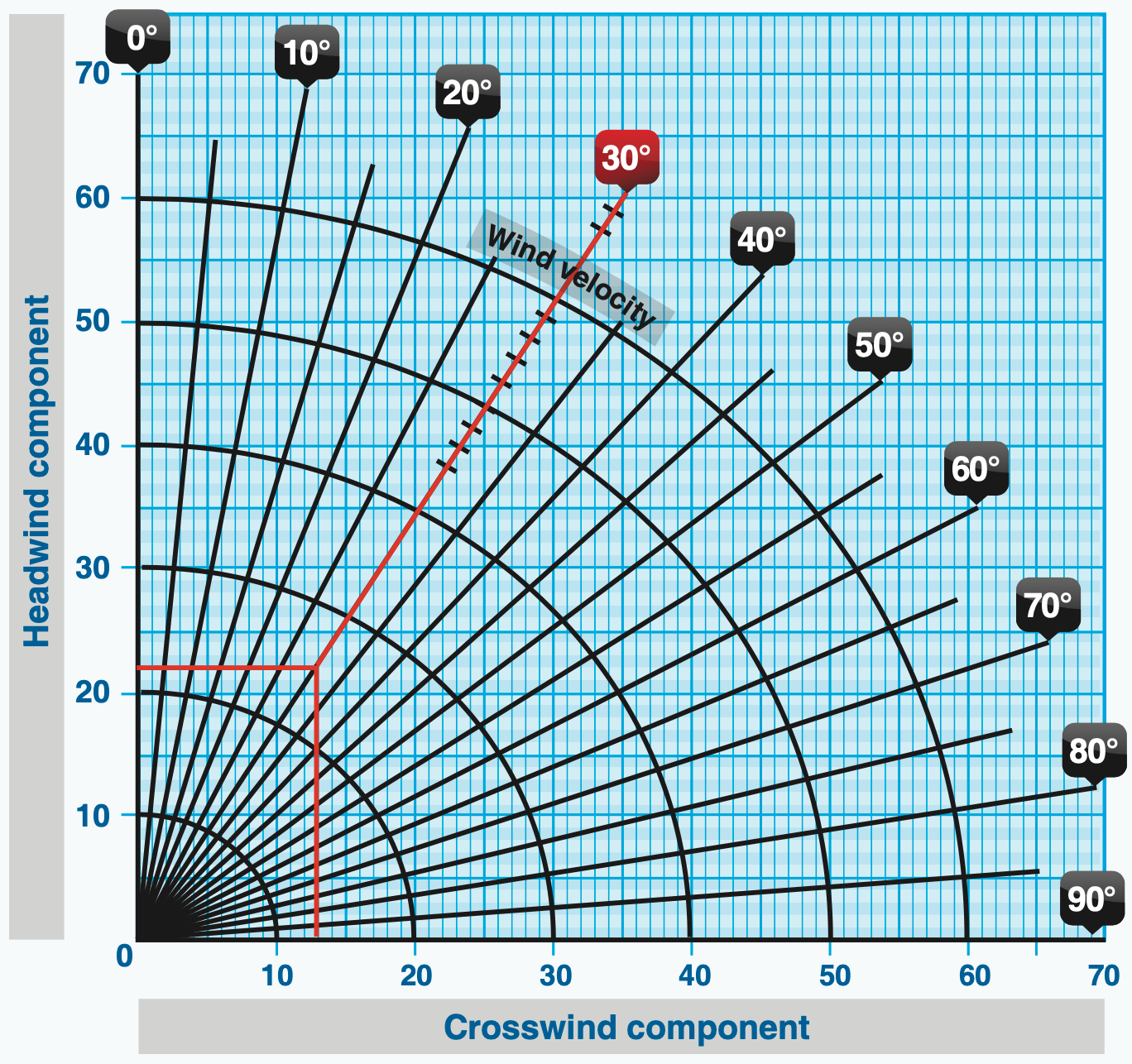
The pilots tried to reduce the crosswind component by changing runways but the wind also changed direction and the crosswind maintained. By continuing they were operating the aircraft outside of its approved performance envelope as set out by their airline.
As if the thunderstorm and winds weren’t enough, the situation worsened on approach as a rain cell reduced visibility to the point that the pilots noted several times that they were losing sight of the runway. Just as importantly, the rain also reduced visibility on the runway, which is where the story starts to escalate.
⚠️ Get-there-itis hint: if things keep getting worse and worse and don’t feel right, trust your gut.
Runway Visual Range (RVR) is the distance a pilot can see in front of them on the runway. This is a critical metric and is reported to the pilot by the airport before they commence their approach and landing. RVR is measured in feet, on a clear day a pilot can be expected to see at least 6,000 feet down the runway.
In this incident, the RVR was reported at 1,600 ft, about a quarter of the amount of a clear day. Considering the average airliner lands on the runway traveling ~350 feet per second, this only gave the pilots 4 seconds of “sight” to gain situational awareness, align with runway lights, prepare to exit at a taxiway, keep sights on end of runway…and, relevant to us today, recover from an abnormal landing.
A reduced RVR also reduces the crosswind that an aircraft can land with as pilots have less time visual time to react. Remember the crosswind issue from above? A wet runway and low RVR reduced their max crosswind limit to only 10 knots!
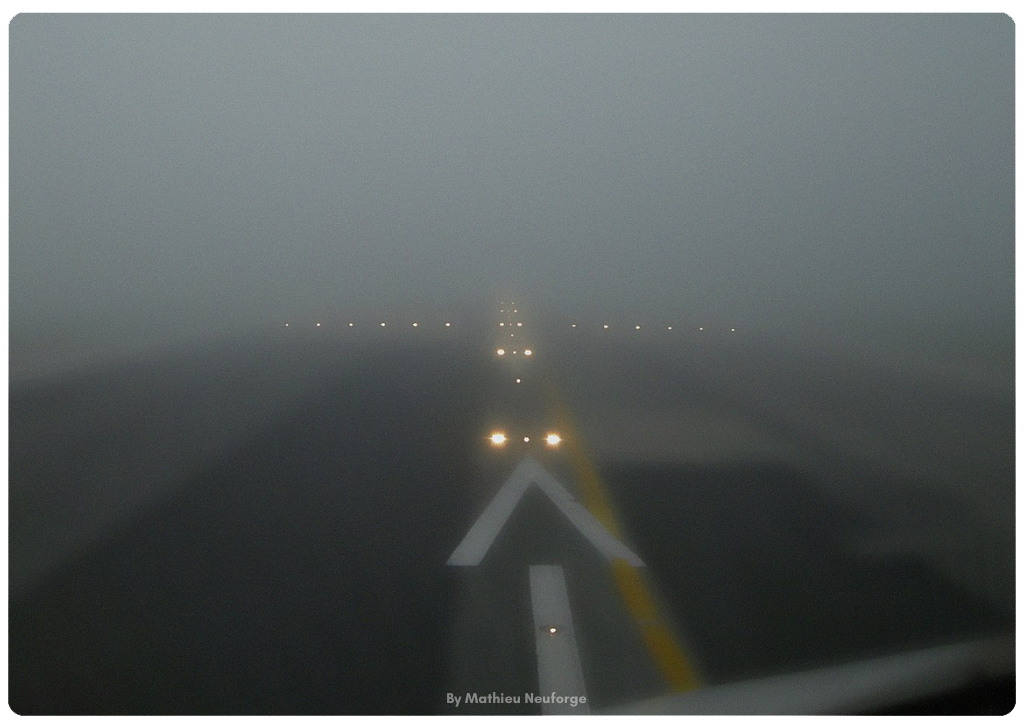
Problems were mounting up fast for these pilots, and the airplane wasn’t even on the runway yet. As the winds raged, rain plummeted and visibility fell, the pilots were still proceeding with a landing that was not aligned to company policy, and many other pilots would probably have opt not to proceed with (according the accident report). The pilots struggled increasingly to keep the plane on a stabilized approach.
There was only one option at this point: abort the landing, complete a go-around and divert to another airport - this approach and landing needed to be ended. Unfortunately it wasn’t ended, and perhaps if luck was on their side we would never have to write this article, but there is one more critical piece of information to cover.
⚠️ Get-there-itis hint: when it feels like there is a better option, there probably is. Take the time to discuss it.
Unbeknownst to the pilots at the time, they had missed a critical task as part of a rushed series of landing checklists. The investigators would later call this a key omission contributing to the severity of the crash.

As part of pre-landing checklists the pilots needed to arm the spoilers. These do exactly what you would expect: spoil the airflow over the wings which reduces lift, as well as helps to plant the main wheels into the pavement to aid in braking effectiveness. These are exactly the effects that you want when landing on the runway.
Normal procedure requires the pilots to “arm” the spoilers on final approach so that they deploy automatically when the main landing gear comes in contact with the runway.
In the case of Flight 1420, investigators showed that the spoilers were not armed, so they did not deploy. Without spoilers deployed the pilots were working with up to 80% less braking authority from their wheel-based ABS system than normal.
This, combined with a wet runway, high crosswind and low visibility meant that it is no surprise what happened next.
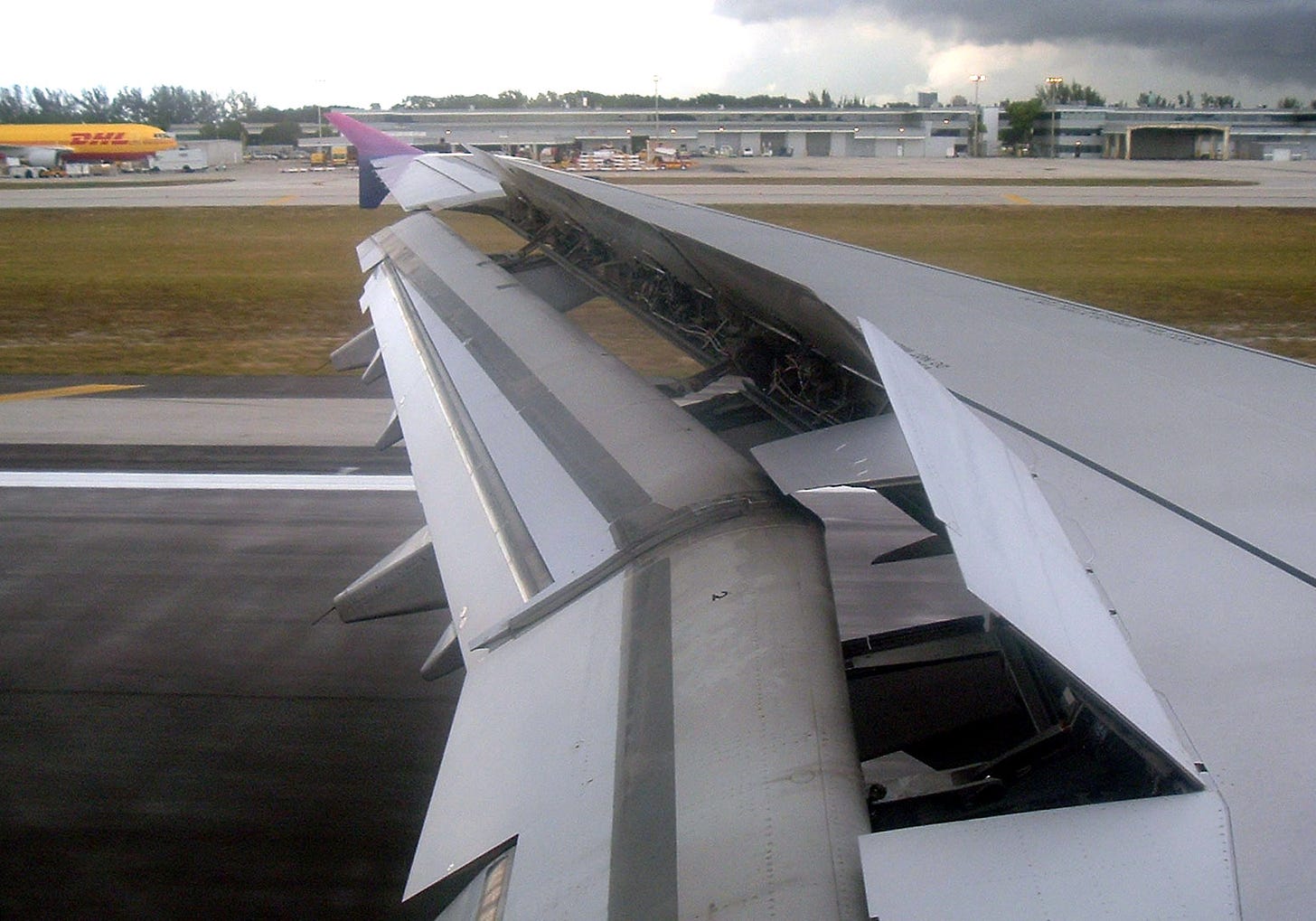
Upon landing the first officer is recorded as saying, “we’re sliding!” What followed was dramatic yawing back and forth down the runway as the plane couldn’t be controlled.
Moments later traveling at 160 km/h the aircraft overran the end of the runway and crashed down an 8-metre embankment crashing into an ILS localizer. Nine people lost their lives on impact, and another two later the following week in hospital. 110 people were injured.
Eerily, only about 20 minutes before the aircraft ran off the runway, the captain had announced to the passengers in a jovial gesture before descent that there was “quite a light show off the left hand side of the aircraft.” Excitedly many of the passengers on the aircraft must have craned their necks to look.
Just a few minutes later though, this light show would be one of the core causes of everyone’s lives changing forever, and for 11 of them including the very captain who made the announcement, it would be their final moments alive.
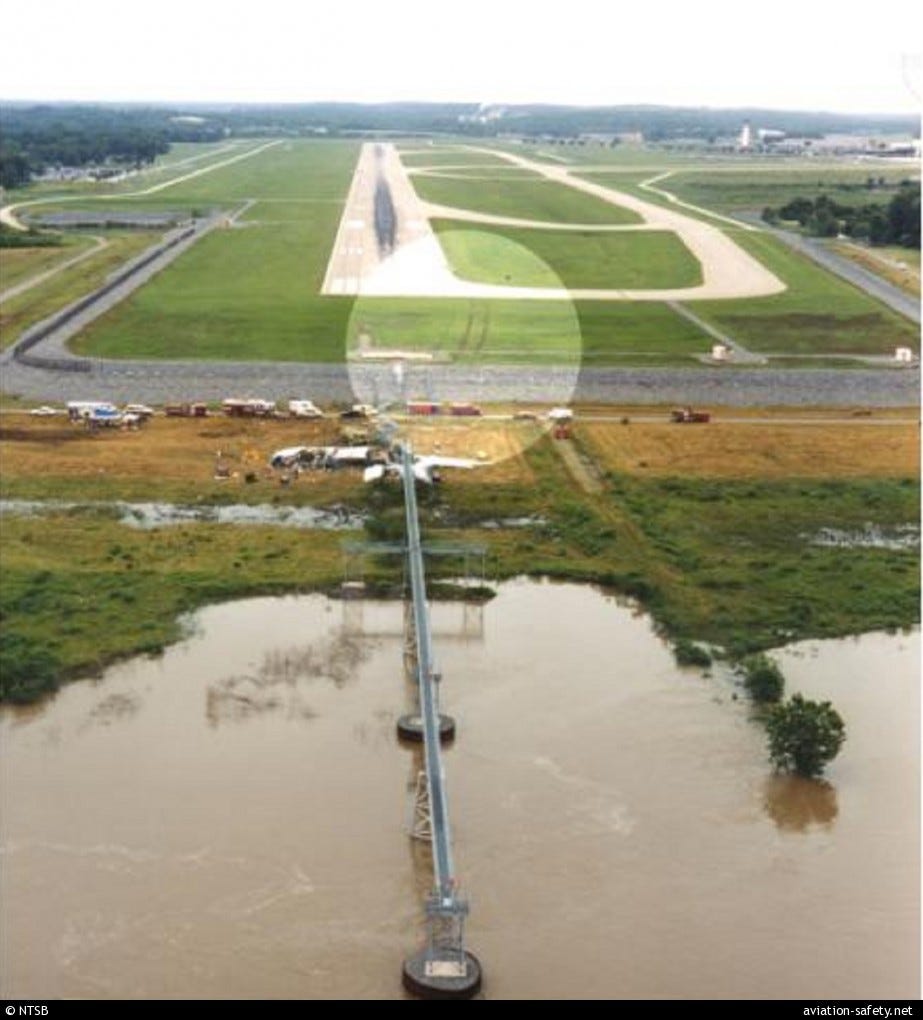
PROBABLE CAUSE
The accident investigators summarized the causes of the accident in their report as:
"The flight crew's failure to discontinue the approach when severe thunderstorms and their associated hazards to flight operations had moved into the airport area and the flight crew's failure to ensure that the spoilers had extended after touchdown.”
- Accident report
But one must ask why. Why did they not discontinue the approach? Why did they forget to arm the spoilers? Why did they mis-remember company policy?
As the accident report made clear, the pilots were under pressure to “expedite” their flight due to the weather conditions. They were also tired, which worsens our ability to think clearly especially when under pressure. The situation kept getting worse and worse, and the pilots didn’t re-evaluate whether they should proceed or not. Get-there-itis likely reared its ugly head.
“The flight crewmembers’ intention to expedite the landing despite the weather diverted their attention away from other activities during the final minutes of the flight and, as a result, affected the crew’s ability to properly assess the situation and make effective decisions”
- Accident report
According to the accident report, these pilots arguably and allegedly made mistakes, but 25 years ago they also didn’t have the resources and awareness that pilots have nowadays to prevent this situation from occurring. In the decades since, pilot duty time maximums have reduced, airline policy changed, additional spoiler checks and warnings are now mandatory, runway overrun material arrestor systems are now commonplace, and many other learnings have been implemented.
Remarkably, there has never been another fatal runway overrun in the US since this accident, offering perhaps some small solace to the families of those who perished in flight 1420.
It is worth noting that the surviving First Officer went on to have a long and successful career as a pilot, thankfully. This individual disputes some of the findings of the investigators, including asserting that he actually did call for the spoilers to be armed.
TAKE AWAY
Get-there-itis isn’t just a condition that affects pilots. It affects us all. Recognizing the signs, the hints and the nudging is critical to prevent its ravenous forces playing out.
According to Harvard researchers, "the basic idea is that the brain [under pressure] is shunting its resources because it's in survival mode, not memory mode," said Dr. Ressler.
The brain literally behaves differently when under pressure.
Those who recognize this, master it, and manage it are the ones that can position themselves more favourability than the rest of us who succumb to its effects.
© Analogous Insights


